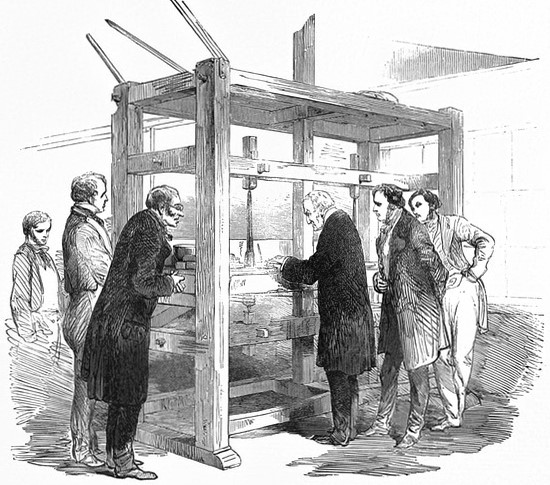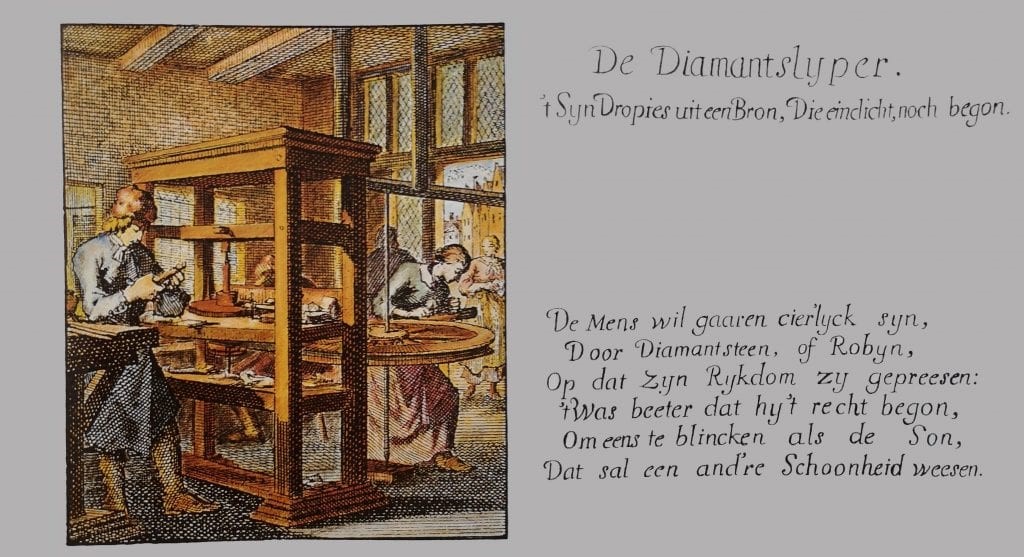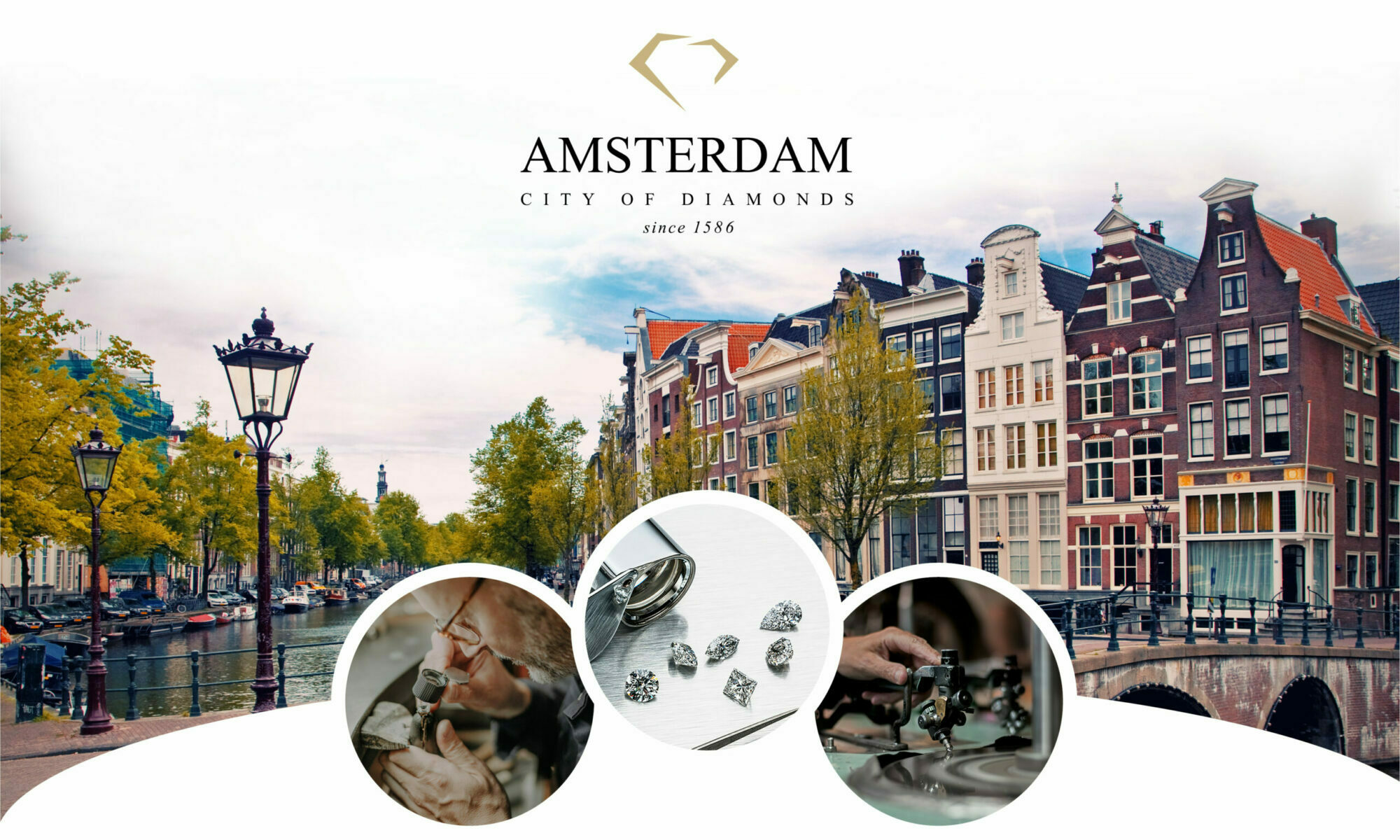Amsterdam, “City of Diamonds”
Amsterdam has been known as the ‘City of Diamonds’ for over 400 years. But the story of how Amsterdam became the diamond capital of the world begins in Southern Europe, more than 600 years ago.

The Moorish Empire was in power; Jewish people were no longer welcome in Portugal and most parts of Spain. Fearing persecution, many Jews fled north. Many of them ended up in Antwerp (Belgium). At first, this seemed to be a safe place to settle down. Here, they learned and perfected the craft of processing precious stones and diamonds. However, a peaceful life was short-lived, as religious intolerance eventually reached Antwerp a few years later. Once again, the Jewish refugees had to find a new place to call home. During that period, The Netherlands was known as one of the most tolerant countries in Europe. The choice for many to move to Amsterdam was therefore easily made. A large part of the Jewish population came to Amsterdam, taking their knowledge and craftsmanship of diamond manufacturing with them.
The first diamond worker
It is difficult to put a pin on the exact date on which the first diamond workers came to Amsterdam. Nevertheless, there is still a specific date that we hold on to, which is November 15th, 1586. On this day, Mr. Willem Vermaet registered himself in the marriage registry. His marriage certificate mentions his profession: “diamond worker”. Willem’s marriage certificate is the first official document with the profession of diamond worker on it. Of course, there must have been diamond workers before this date, however, there are no official records to be found.
Shortly after the official recognition of the diamond worker profession, the diamond industry developed rapidly and established itself in just a few years’ time. Around the beginning of the 17th century, Amsterdam was globally seen as the center of the diamond industry, for both trade and the processing of diamonds.
The tolerant and liberal city of Amsterdam
The tolerant and liberal city of Amsterdam Amsterdam was thriving and people led a stable life. The Netherlands was a quiet and pleasant place to live. But other parts of Europe were restless, especially after 1618. The infamous Pogroms terrorized entire populations in Eastern Europe. They killed anyone who disagreed with their beliefs. Due to anti-Semitism and violence against Jews, many Eastern European Jews therefore fled to Amsterdam.
New refugees
The liberal and tolerant Amsterdam once again opened its doors to the influx of refugees. But unlike the wealthy Sephardi Jews, who came to Amsterdam during the Moorish rule, the Eastern European Jews were much poorer. At that time, the guilds in Amsterdam had the power to determine who could do what work. This meant that the new refugees could not do traditional work. However, there was one exception: the guilds had no influence on the relatively new profession of diamond worker. It took between three and five years to become a master diamond cutter. This meant that the new (poorer) refugee Jews could become diamond workers and at least earn a living. For example, many – perhaps even most – Jewish people in Amsterdam became involved in the diamond industry. The Eastern European refugees made the Amsterdam diamond industry flourish, and they are, in fact, the founders of modern grinding techniques.
The popularity of diamonds
In 1725, diamond mines were discovered in Brazil. Amsterdam obtained the monopoly on the import of rough diamonds from that specific country. Suddenly, large quantities of diamonds were available to The Netherlands. From this moment on, Amsterdam was nicknamed “Amsterdam, City of Diamonds”. But halfway through the 19th century, Brazil’s fields began to run dry. Diamonds became scarce again and unemployment hit the diamond industry hard. Many diamond polishing companies went bankrupt and only a few managed to survive.
The crisis affects everyone
After some time, the crisis started to affect more and more people. Even the largest diamond polishing companies feared the end of an era. Luckily, large diamond mines were discovered in South Africa, just in time. This allowed the large inflow of diamonds to start up again and it saved the profession of all diamond workers. The golden years soon returned to the city of diamonds. At the same time, the wealth of the middle class increased in both Europe and in the United States. Diamonds were more popular than ever, as more people were able to afford them.

The city of diamonds faces competition
The city of diamonds faces competition Around 1870, diamonds became very popular and the diamond workers received suitable wages. The thousands of diamond workers earned as much as 130 guilders a week, equivalent to about $63. This was a very high salary at the time. But increasing union influence and high customs duties jeopardized Amsterdam’s position as the leader of the diamond industry. The city of Antwerp in Belgium, seized its chance to take over the leading position. Until this point, only low-quality diamonds went to Antwerp. However, the city set out to change this.
Diamonds to Antwerp
As Amsterdam was under pressure, Antwerp attracted trade. They began processing some more luxurious diamonds. Through lower wages and “flexible working conditions,” Antwerp was able to obtain a share of the diamond production in South Africa. With the rise of Antwerp, Amsterdam was no longer the sole diamond distributor in Europe. Together, the Amsterdam diamond merchants had to develop a system to streamline the flow of all the diamonds. But they also had to create and implement a functioning market mechanism for polished diamonds. In other words: The Netherlands needed equal rules for manufacturing and trading diamonds.
Strict rules for polishing and trading diamonds
Strict rules for polishing and trading diamonds In 1881, The City of Diamonds founded the Central Diamond Trade Association (CDTA). Until then, knowledge was passed on through families and word of mouth. The association was the first to put the knowledge and rules of diamonds in writing. Due to disagreements over policy, the Diamond Exchange was established on December 11th, 1889, making the CDTA obsolete. The Diamond Exchange was the official representative of the diamond trade and industry in The Netherlands, and still is to this day.

Diamond Exchange Centre
On September 17th 1890, the Dutch King, William III approved the documents for the “Fair Society for Diamond Trade”. This meant that the world’s first Diamond Exchange, located in Amsterdam, could open its doors. Today there are 30 Diamond Exchange Centers worldwide, the one in Amsterdam being the oldest. The centers monitor compliance with the strict rules that apply to the diamond trade. Until the Second World War, the Amsterdam Diamond Exchange was the world center for the diamond trade. During World War II, the Amsterdam Diamond Exchange was attacked. Some diamond traders and diamond workers fled the country, the Van Moppes Diamonds family, for example. All traders who did not flee were forced to give up their diamond stock.
The Amsterdam diamond industry after World War II
Due to the war, Amsterdam lost many diamond workers, trader’s and diamonds. After all, 95% of all diamond workers were Jewish. After the Second World War, the diamond industry picked itself up again, just like the rest of The Netherlands. But the war changed everything. Amsterdam’s position as the diamond center of the world came to an end. Fortunately, the knowledge and techniques of diamond manufacturing were preserved. The diamond workers, who returned after the war, ensured Amsterdam’s future as ‘The City of Diamonds’.
